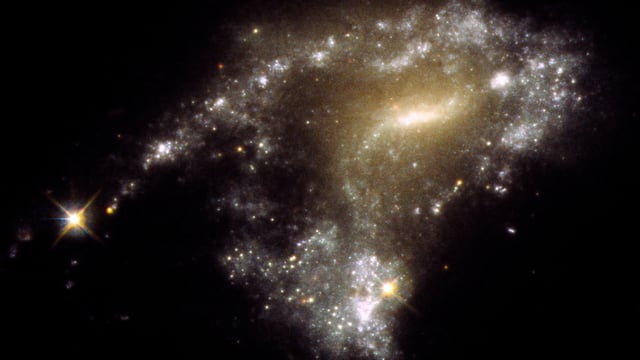Overview
- NASA's Hubble Space Telescope has unveiled 425 clusters of newborn stars in the tidal tails of 12 interacting galaxies.
- Each cluster contains as many as 1 million blue, newborn stars, formed from gas and dust pulled out during galactic collisions.
- The discovery sheds light on the efficiency of star cluster formation in the debris of galaxy mergers, previously less understood.
- These 'string of pearls' star clusters, only 10 million years old, could evolve into globular star clusters or disperse to form a halo around their host galaxy.
- The findings provide a glimpse into the early universe, suggesting such star formation may have been more common when galaxy collisions were more frequent.
